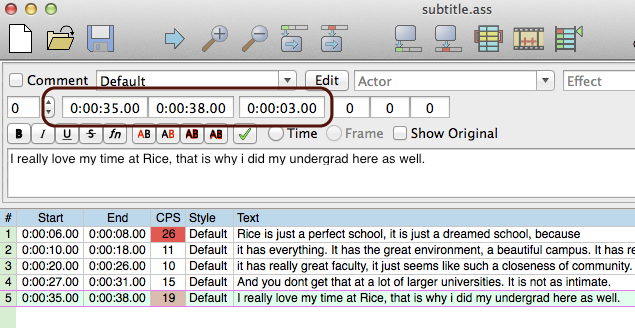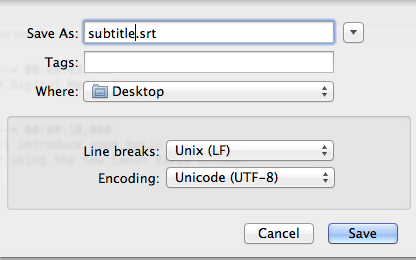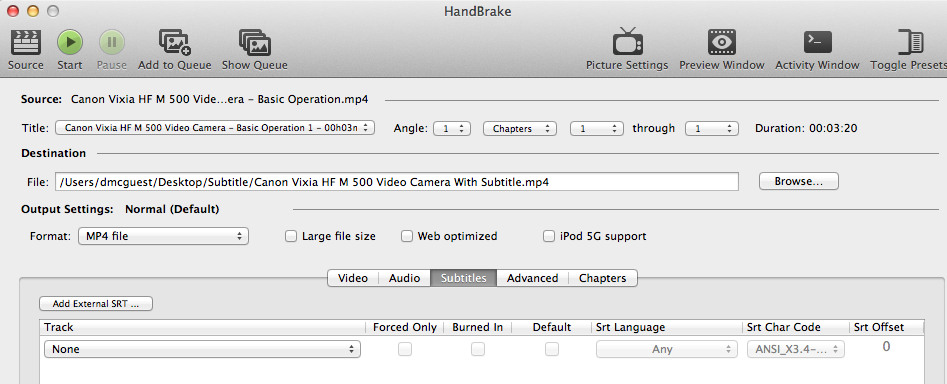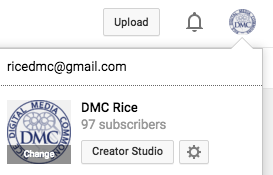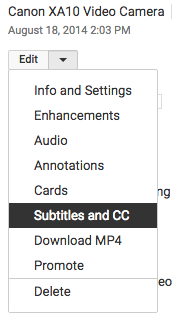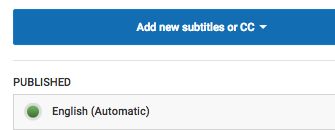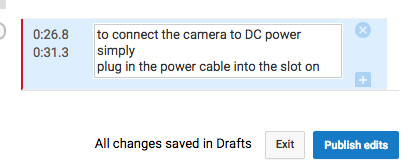The difference between subtitle and caption:
- Captions include subtitles plus a written description of what is occurring in their videos for viewers who might not be able to hear or understand the sound.
- Subtitles provide viewers with a video’s dialogue in written form and can be used to translate the spoken language.
The benefit of adding subtitle to videos:
- Subtitles enable deaf and hard of hearing users to watch videos. This is important for all video publishers especially educational institutions who need to comply with accessibility laws and internal policies.
- Subtitles can be translated into different languages which help you reach broader audience.
- They also act as metadata that helps your videos show up in more places on YouTube.
Subtitle formats:
- There are many subtitles formats, such as SRT, WebVTT, DFXP/TTML, SCC, and SAMI files. The most commons file is SRT.
What is SRT file:
- SubRip caption files are named with the extension .SRT. This format is supported by most video players and subtitle creation programs. The time format used is hours:minutes:seconds:milliseconds, with the milliseconds field precise to three decimal places. The purpose of srt subtitle file is to be used with desired movie file together to display subtitles when you play video file by any player supporting srt subtitles. If your video doesn’t include any subtitles, you can create and add a .srt file to your video.
How to create SRT file:
To create SRT file, you can either use Aegisub freeware at the DMC or simply use TextWrangler, Notepad, or any text editor.
Create SRT file with Aegisub:
- All DMC video editing stations have Aegisub installed and it looks like this:
- Open Aegisub, simply enter your caption text alongside a start and finish timecode. The first timecode is a start timecode for this line of text; second timecode is the finish timecode; the third timecode is the line duration. You can adjust the timecode according to your video. Press Enter to add this line to the sequence window below.
- Use spacebar to play and pause your video with any media player or within Final Cut Pro X while creating SRT file with Aegisub. Try to make the start and end timecode as accurate as possible.
- Repeat the step 2 until all the lines are inputted.
Go to File > Export As..., continue to click on Export, and be sure to save as SubRip(*.srt) file type.
- For more information, visit http://www.makeuseof.com/tag/subtitles-text-editor-aegisub/
- All DMC video editing stations have Aegisub installed and it looks like this:
Create SRT with TextWrangler or NotePad
- Open TextWrangler for Mac user (TextWrangler can be downloaded here and is also available on all DMC video editing stations) or Notepad for PC user.
- Edit subtitles shown as below:
Notes: SRT consists of four parts, all in text.- A number indicating which subtitle it is in the sequence.
- The time that the subtitle should appear on the screen, and then disappear. The time format used is hours:minutes:seconds:milliseconds, with the milliseconds field precise to three decimal places.
- The subtitle itself.
- A blank line indicating the start of a new subtitle.
- Save subtitles to .srt format:
- In TextWrangler or Notepad, please click menu File->Save As, change file extension to “.srt”;
- In TextWrangler, Set Line breaks to Unix(LF), choose UTF8 encoding in order to correctly display special characters.
- In Notepad, set type to ALL Files, “Encoding” to "ANSI" if using English subtitles, or “UTF-8" if using non-English subtitles.:
How to encode subtitles
To add subtitle to your videos, you may use freeware HandBrake. HandBrake is available on all DMC video editing stations and can also be downloaded to your computer for free.
(Note that Toast Titanium 10 on DMC video editing stations does not support subtitle file. Therefore, you cannot create DVD video with subtitle using Toast software. )
Note: The subtitle encoded with HandBrake will be added to your video as a separate track, which can be turned on/off within common media players, such as QuickTime player or VLC player.
- Open HandBrake, click the Source button and choose your video file. Then choose a destination for your output file, and be sure the output file format is MP4, and leave everything else as is.
- Now click on the Subtitles tab on the center and click Add External SRT.... Pick the SRT file and it will show up in the list box below
- You can add more than one subtitle file if you need, i.e. for multiple languages.
- Last, click on Start to start encoding your subtitles.
How to add subtitles in YouTube, Vimeo, or JW Player
Add subtitle to your YouTube video:
- Log into your YouTube channel.
- Click on your account located on upper right corner, then click on Creator Studio
- Within Creator Studio, click on VIDEO MANAGER on the far left .
- Next to the video you want to add subtitles to, click the drop-down menu next to the Edit button and select Subtitles and CC.
- In the drop-down menu, choose the language that's spoken most in the video and click Set language.
- Click the Add subtitles or CC button.
- Choose the type of file to upload
- Click the Choose file button and browse your computer for the file
- The file will auto-populate and let you know the timing of each subtitle or closed caption. Clicking the "CC" icon in the YouTube player turns the subtitles on.
- Note: If you dont have subtitle file, YouTube automatically generates the subtitle for your video IF your audio is clear. If automatic captions are available, they'll automatically be published on the video. You can edit this subtitle instead of creating your own subtitle file. To do so, click on English (Automatic) to open the auto subtitle, then click on edit button to start editing the subtitle. Click on Publish edits to save the updates. You may also click on Actions to download the subtitle as .srt file.
-----------> - If you have more than one subtitle uploaded and published to your YouTube video, only the most recent published subtitle will be the active subtitle. To unpublish or delete the subtitle you dont want, click on the subtitle, then click on Actions –> select either Unpublish or Delete.
- For more information, visit https://support.google.com/youtube/answer/2734796?hl=en
2. Add subtitle to your Vimeo video:
On the Advanced tab of any video’s Settings, you’ll see different options for adding captions to your videos:
- Upload: If you already have subtitle file created in above steps, this option will allow you to upload the SRT file.
- If you’re uploading a file, click Choose File, specify the language, and select caption or subtitle file.
- Once the file is uploaded, check the box next to the file name to activate it. Uncheck the box to deactivate the file, or click the red X to delete it entirely.
- Editor: launch Amara’s editor and create your own files without leaving Vimeo.
- Purchase: purchase subtitling and captioning services provided by Amara.
- Upload: If you already have subtitle file created in above steps, this option will allow you to upload the SRT file.
For more information about captions and subtitles for Vimeo vidoes, visit https://vimeo.com/help/faq/managing-your-videos/captions-and-subtitles
3. Embed subtitle in JW Player:
http://support.jwplayer.com/customer/portal/articles/1407438-adding-closed-captions
http://www.3playmedia.com/how-it-works/how-to-guides/jw-player/
Resources
- Adding Captions to Videos on Web Pages https://www.washington.edu/accessibility/videos/web-pages/
- Adding Captions to Video in Canvas https://www.washington.edu/accessibility/videos/canvas/
- Creating Accessible Videos https://www.washington.edu/accessibility/videos/
- Adding Captions to Zoom Recordings https://www.uhd.edu/academics/humanities/about/faculty-staff/Documents/Adding-Captioning-to-Zoom-Recordings.pdf
